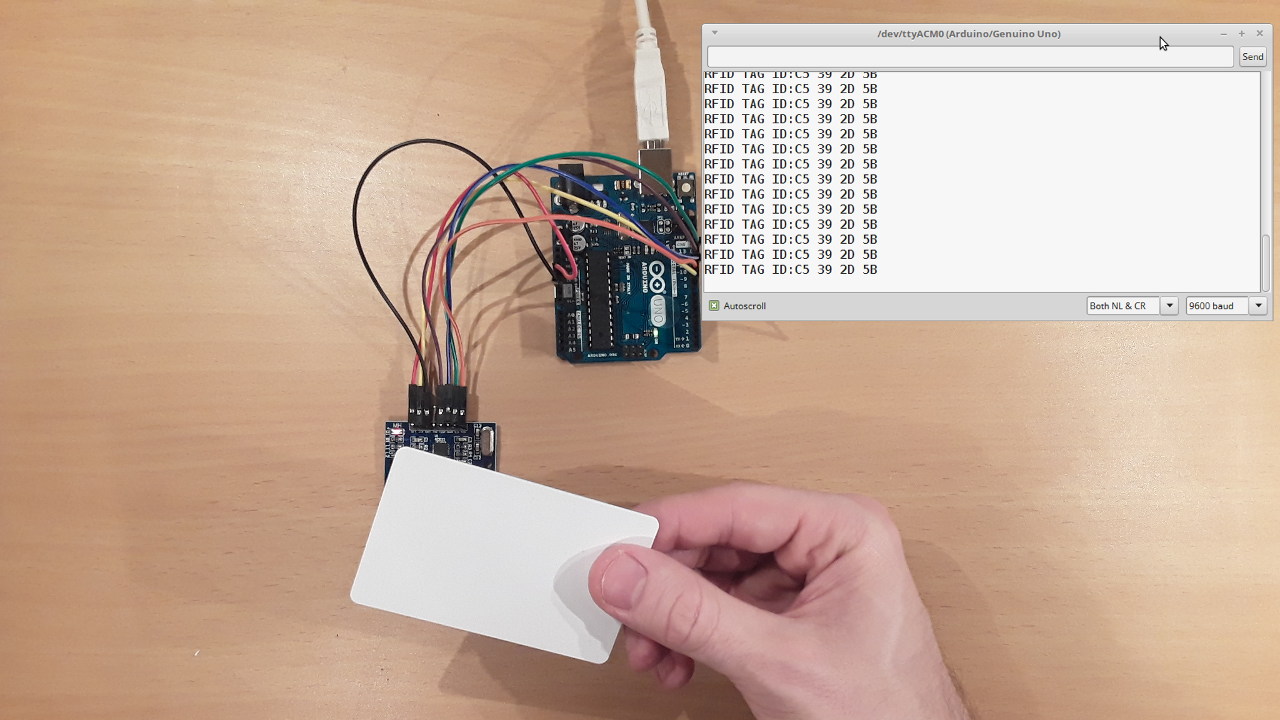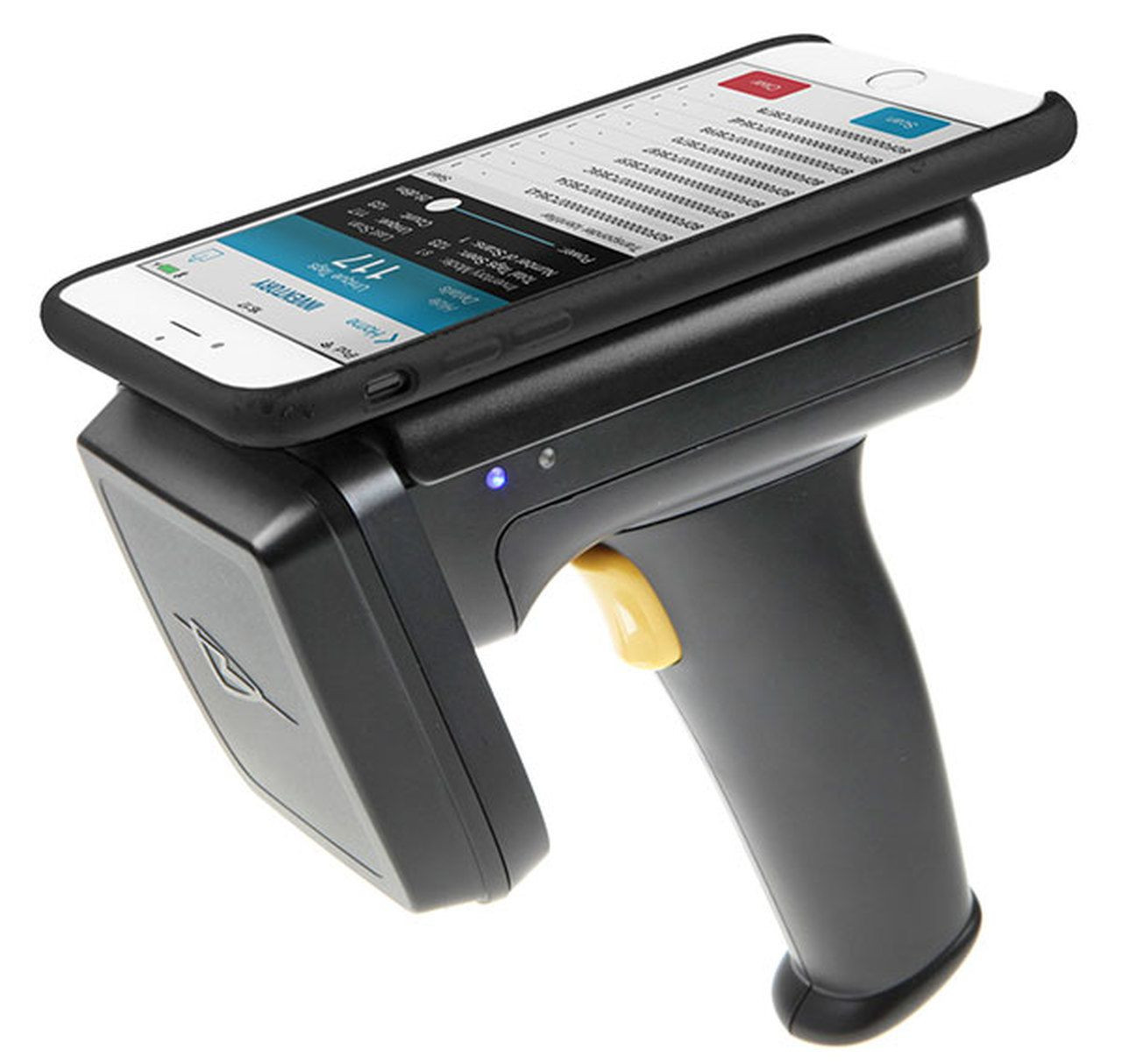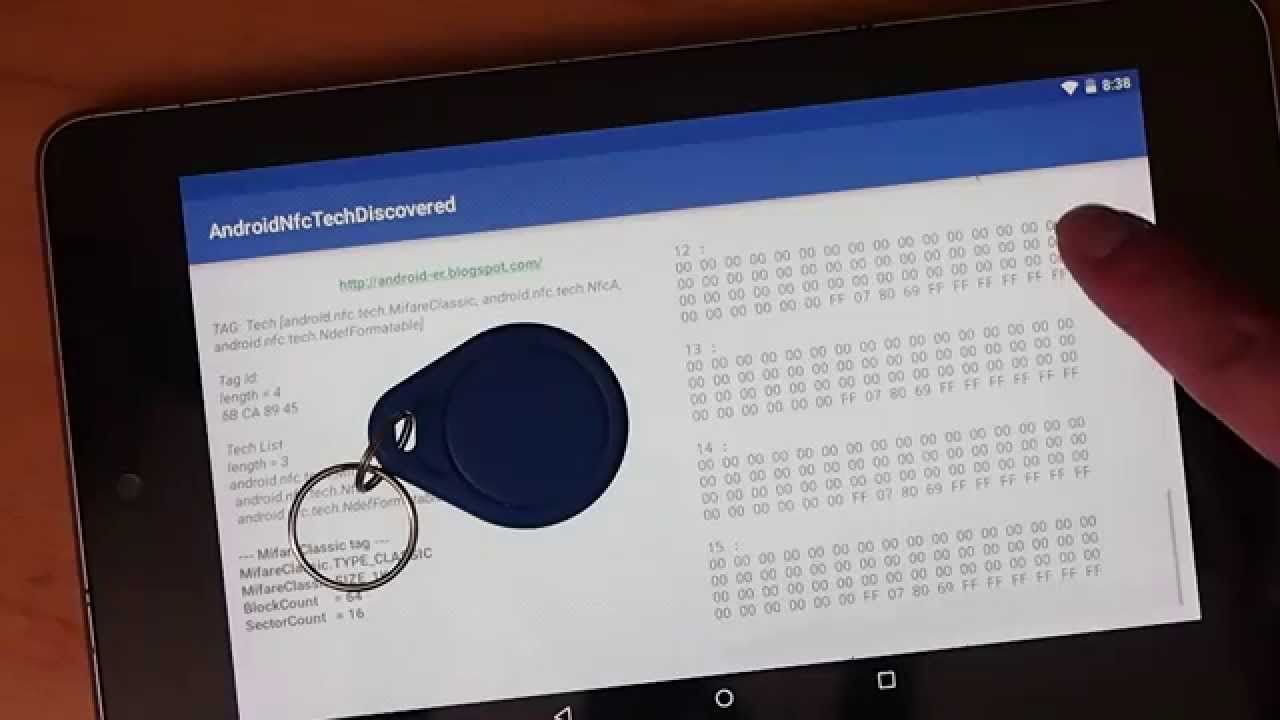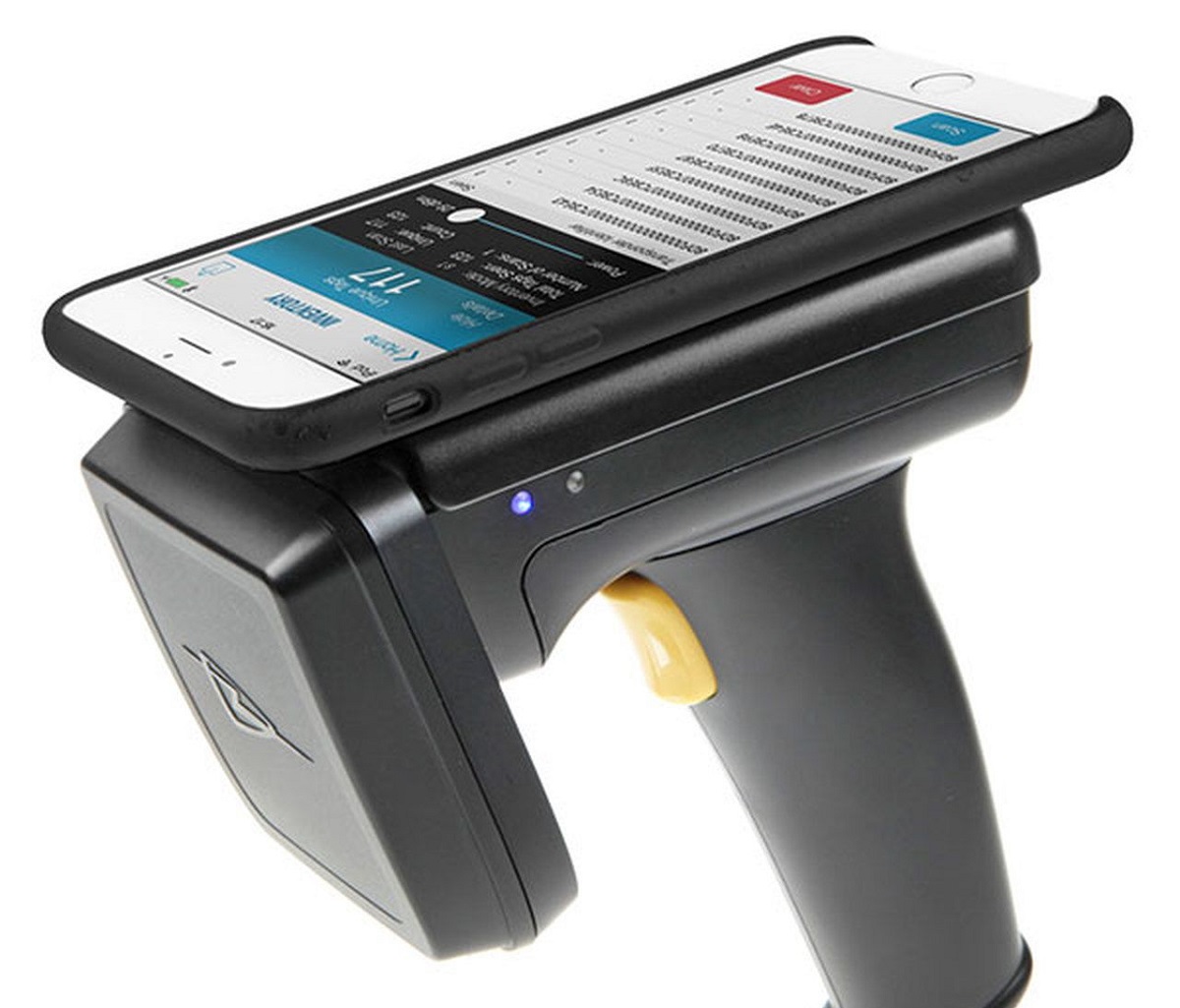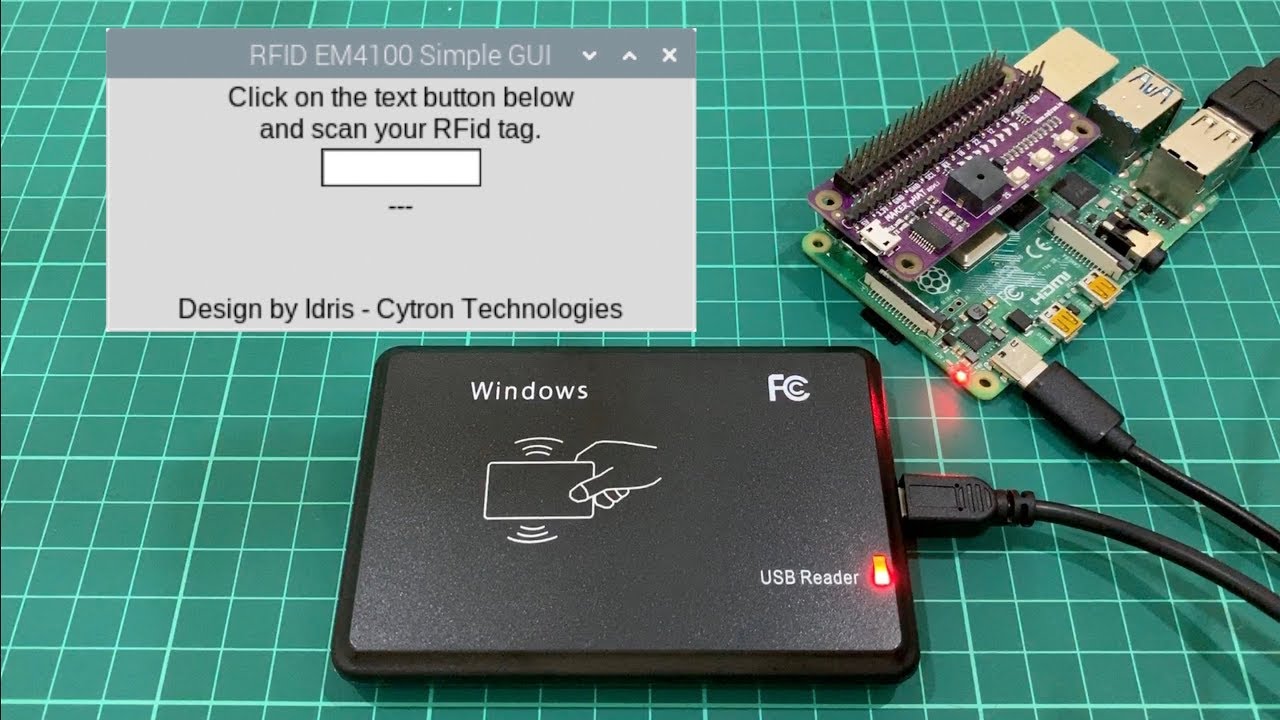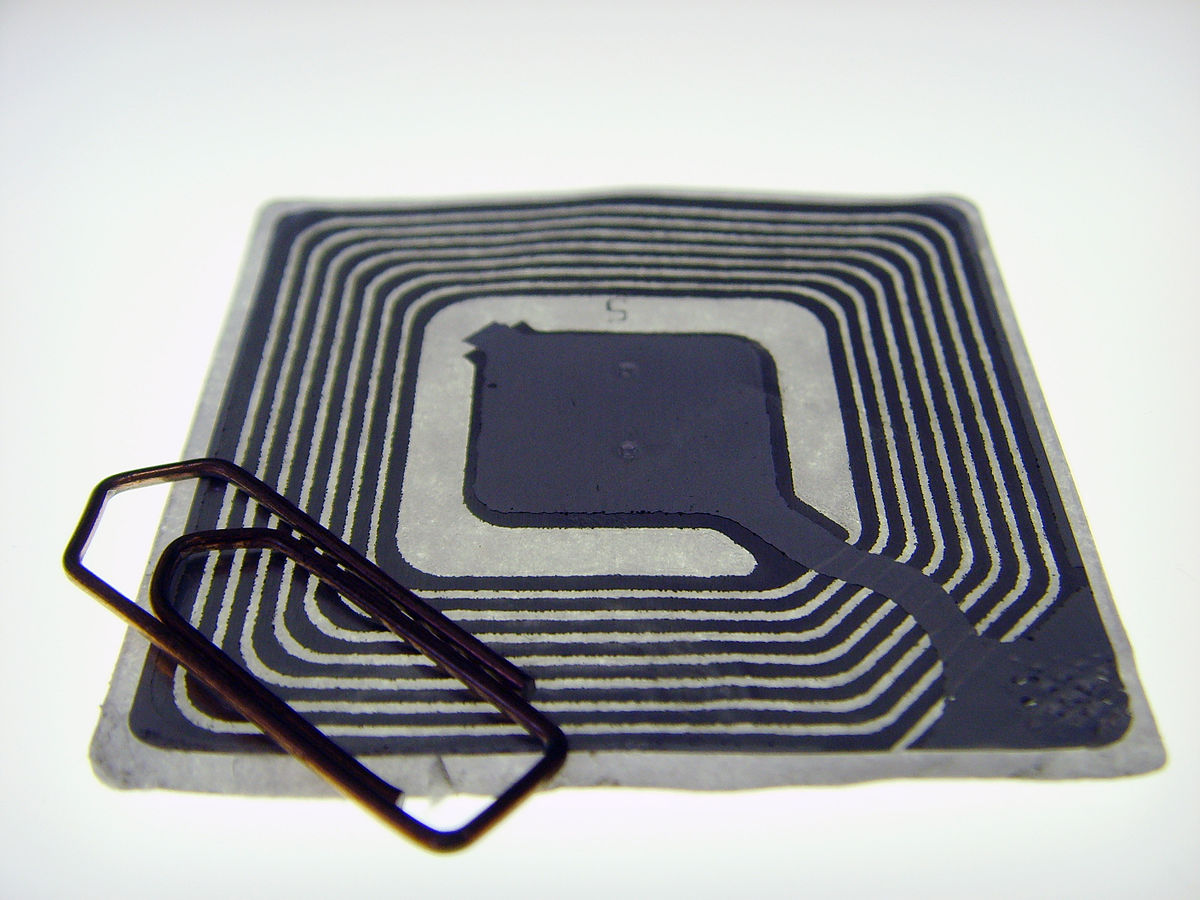Introduction
RFID (Radio Frequency Identification) technology is a revolutionary system that allows the identification and tracking of objects using radio waves. It has gained widespread popularity and adoption across various industries due to its efficiency, accuracy, and versatility. In this article, we will explore the basics of RFID technology, its components, types of RFID tags, and how they work.
RFID technology is based on the use of RFID tags, which are small electronic devices that can store and transmit data wirelessly. These tags contain a microchip and an antenna, allowing them to communicate with RFID readers. Unlike barcodes, which require direct line-of-sight scanning, RFID tags can be read from a distance and even through materials such as fabric, plastic, or cardboard. This makes them ideal for inventory management, supply chain tracking, asset tracking, access control, and many other applications.
The RFID system consists of three main components: RFID tags, RFID readers, and a backend system. The tags are attached to the objects or assets that need to be tracked, while the readers are responsible for capturing the data from the tags. The backend system processes and stores the collected data, allowing users to access and manage the information effectively.
There are different types of RFID tags available, including passive tags, active tags, and semi-passive tags. Passive tags rely on the energy received from the RFID reader to power their operation, while active tags have their own power source and can transmit data over longer distances. Semi-passive tags also have their own power source but only use it to power the microchip, relying on the reader’s energy for communication.
The operation of RFID tags is fairly simple. When a tagged object comes within the range of an RFID reader, the reader emits radio waves that power the tag. The tag then responds by sending back its unique identifier and any other stored data. The reader captures this information and sends it to the backend system for further processing.
RFID systems operate at different frequencies, including low frequency (LF), high frequency (HF), and ultra-high frequency (UHF). The choice of frequency depends on the specific application and the desired read range. LF tags are commonly used for short-range applications like access control, while UHF tags are ideal for long-range applications such as inventory management.
Various factors can affect the read performance of RFID tags, including interference from other radio frequencies, tag placement, tag orientation, and nearby metal objects. Understanding these factors and implementing best practices can optimize the read performance and reliability of RFID systems.
What is RFID Technology
RFID stands for Radio Frequency Identification, a technology that uses radio waves to identify and track objects. It consists of small electronic devices called RFID tags, which contain a microchip and an antenna. These tags can store and transmit data wirelessly, allowing for easy identification and tracking of objects or assets.
RFID technology offers numerous advantages over traditional methods of identification and tracking, such as barcodes. Unlike barcodes, which require direct line-of-sight scanning, RFID tags can be read from a distance and even through materials like fabric, plastic, or cardboard. This makes them highly versatile and suitable for a wide range of applications.
One of the primary advantages of RFID technology is its ability to enhance efficiency and accuracy in various industries. RFID can significantly improve inventory management, supply chain visibility, and asset tracking. With RFID tags attached to products or assets, businesses can quickly and accurately record and update their locations, monitor stock levels, and streamline logistical operations.
Another key benefit of RFID technology is its real-time tracking capabilities. Unlike traditional methods that require manual input and reporting, RFID enables automatic tracking and data collection. This means that businesses can have up-to-date and accurate information about their assets or inventory, allowing them to make informed decisions and improve overall operational efficiency.
RFID technology also offers enhanced security and control in access control systems. RFID tags can be used to grant or restrict access to specific areas based on the individual’s authorized access level. By using RFID technology in access control, organizations can ensure proper security measures and monitor the movement of individuals within their premises.
In addition to the business applications, RFID technology is also utilized in various other sectors. It is commonly used in transportation and logistics for tracking packages or luggage, in healthcare for patient monitoring and inventory management, in retail for theft prevention and product tracking, and in agriculture for livestock tracking and monitoring.
Overall, RFID technology provides a powerful and efficient solution for identification, tracking, and data collection. Its versatility, accuracy, and real-time capabilities make it an indispensable tool for businesses across industries. By harnessing the power of RFID, organizations can streamline operations, improve efficiency, and gain a competitive edge in today’s fast-paced world.
Components of RFID System
A typical RFID system consists of three main components: RFID tags, RFID readers, and a backend system. Each component plays a crucial role in the overall functionality of the RFID system.
RFID tags: These small electronic devices are attached to the objects or assets that need to be identified and tracked. RFID tags contain a microchip that stores unique identification data and an antenna for communication. The tags can be either passive, active, or semi-passive. Passive tags rely on the energy emitted by the RFID reader to power their operation, while active tags have their own power source and can transmit data over longer distances. Semi-passive tags have their own power source but use the reader’s energy for communication.
RFID readers: Also known as interrogators, RFID readers are responsible for capturing the data stored in the RFID tags. These devices emit radio waves that power the tags and receive their responses. RFID readers can be fixed or handheld, depending on the application. Fixed readers are commonly used in environments such as warehouses, manufacturing facilities, or retail stores, where objects pass through specific checkpoints. Handheld readers provide flexibility and mobility, allowing users to read tags in various locations.
Backend system: The backend system is the central component that processes and manages the data collected from the RFID readers. It includes software and databases that store and analyze the collected information. The backend system allows users to access and extract useful data, such as inventory levels, asset locations, or access logs. It enables real-time monitoring and analysis, providing valuable insights for decision-making and improving operational efficiency.
Additionally, in some RFID systems, middleware software may be used as an intermediate layer between the readers and the backend system. Middleware software provides additional functionalities, such as filtering and processing tag data before sending it to the backend system. It can also integrate with existing enterprise systems, such as inventory management or CRM software, to streamline processes and improve data synchronization.
Overall, the successful operation of an RFID system relies on the seamless integration and coordination between the RFID tags, readers, and backend system. Each component plays a unique role in efficiently collecting, processing, and utilizing the data for various applications. Understanding the functionality of each component is essential for designing and implementing an effective RFID system tailored to specific business needs.
Types of RFID Tags
RFID tags come in various types, each designed to meet specific application requirements. Here are the three common types of RFID tags:
1. Passive Tags: Passive RFID tags are the most common and cost-effective type of tags. They do not have their own power source and rely on the energy emitted by the RFID reader to power their operation. When the reader’s radio waves reach the tag, the tag’s antenna converts the energy into power, allowing the tag to transmit its stored data. Passive tags are typically used for short-range applications, such as access control badges or inventory management in retail stores.
2. Active Tags: Active RFID tags differ from passive tags as they have their own power source, usually a battery. This allows active tags to broadcast their data over longer distances, making them suitable for applications requiring greater read ranges, such as tracking assets in a large warehouse or monitoring vehicles in a parking lot. Active tags are more expensive than passive tags and are commonly used in scenarios where real-time tracking and long-range communication are crucial.
3. Semi-Passive Tags: Semi-passive RFID tags, also known as battery-assisted passive (BAP) tags, combine the characteristics of both passive and active tags. These tags have their own power source but only use it to power the microchip, relying on the energy from the reader to communicate. Semi-passive tags offer longer read ranges compared to passive tags while retaining the cost advantage of passive technology. Such tags are commonly used in asset tracking, transportation, and logistics applications.
In addition to the power source, RFID tags can also be classified based on the frequency at which they operate. The frequency determines the read range, data transfer speed, and the ability to penetrate materials. The most common frequency bands used for RFID tags are:
– Low Frequency (LF): LF tags typically operate at a frequency of 125 kHz or 134 kHz. They offer shorter read ranges and slower data transfer speeds compared to higher frequency tags. LF tags are commonly used in applications such as access control, animal tracking, or healthcare.
– High Frequency (HF): HF tags operate at a frequency of 13.56 MHz. They provide better read ranges and faster data transfer rates compared to LF tags. HF tags are commonly used in applications like contactless payment systems, asset tracking, or document management.
– Ultra-High Frequency (UHF): UHF tags operate at frequencies between 860 MHz and 960 MHz. They offer longer read ranges and higher data transfer speeds, making them suitable for inventory management, supply chain tracking, and retail applications.
When selecting RFID tags, it is important to consider factors such as the required read range, environmental conditions, tag size, and cost. Understanding the different types of RFID tags and their capabilities is crucial for choosing the right tags for specific applications and achieving optimal performance.
How RFID Tags Work
RFID tags, also known as transponders, operate based on simple yet ingenious technology. These small electronic devices consist of a microchip and an antenna, allowing them to communicate with RFID readers. Here’s a closer look at how RFID tags work:
1. Powering the Tag: Passive RFID tags do not have their own power source. Instead, they rely on the energy emitted by the RFID reader to activate and power their operation. When the reader’s radio waves reach the tag, the tag’s antenna captures the energy and transfers it to the microchip. This energy is used to power the microchip and enable communication.
2. Data Storage: The microchip embedded in the RFID tag contains the tag’s unique identification number, also known as the Electronic Product Code (EPC). Additionally, the memory on the microchip can store additional data, such as product details, manufacturing information, or serial numbers.
3. Communication: Once powered, the RFID tag becomes active and ready to transmit data. When the tag’s antenna receives energy from the reader, it begins to emit radio waves back to the reader. These radio waves contain the tag’s unique identification number and any other stored data. The reader captures these radio waves and sends the information to the backend system for processing.
4. Frequency Bands: RFID systems operate at different frequency bands, including Low Frequency (LF), High Frequency (HF), and Ultra-High Frequency (UHF). The choice of frequency depends on the specific application requirements. LF and HF tags operate at lower frequencies and offer shorter read ranges, while UHF tags operate at higher frequencies and provide longer read ranges. The frequency used affects the tag’s ability to penetrate materials and the reliability of communication between the tag and reader.
5. Read Range: The read range of RFID tags varies depending on factors such as the frequency used, the power of the RFID reader, and the size of the tag’s antenna. Passive tags typically have shorter read ranges compared to active or semi-passive tags. The read range can range from a few centimeters up to several meters, depending on the specific RFID system configuration.
6. Interference and Collision: In RFID systems, interference from other radio frequencies can cause disruptions in communication between the RFID tag and reader. To mitigate interference, protocols like anti-collision techniques are employed, allowing multiple tags to be identified in a single reading session without overlapping signals. This ensures accurate and reliable data capture even in environments with a high density of RFID-tagged objects.
Understanding how RFID tags work is essential for implementing effective RFID systems in various applications. By harnessing the power of these small devices, businesses can improve efficiency, accuracy, and visibility in areas such as inventory management, asset tracking, supply chain logistics, and more.
Reading Range and Frequency
The reading range of RFID systems refers to the distance between the RFID reader and the RFID tag at which successful communication can occur. The reading range depends on various factors, including the frequency at which the RFID system operates and the power of the RFID reader. Here’s a closer look at how reading range and frequency are interrelated:
1. Frequency Bands: RFID systems use different frequency bands, each with its own characteristics. Low Frequency (LF) tags operate at frequencies of 125 kHz or 134 kHz, offering shorter read ranges of a few centimeters up to a few meters. High Frequency (HF) tags operate at 13.56 MHz, providing slightly longer read ranges of up to 1 meter. Ultra-High Frequency (UHF) tags operate at frequencies between 860 MHz and 960 MHz, offering longer read ranges of several meters up to tens of meters.
2. Antenna Design: The design and size of the RFID tag’s antenna also play a crucial role in determining the reading range. Antennas with larger surface areas can capture more radio waves emitted by the reader, enabling longer read ranges. However, larger antennas may impact the practicality and usability of the RFID tags, especially in applications requiring small or discreet tags.
3. Power Output of RFID Reader: The power output of the RFID reader directly affects the range at which it can successfully read RFID tags. Higher-powered RFID readers can emit stronger radio waves, enabling longer read ranges. However, it is important to consider regulatory standards and limitations regarding power output to ensure compliance and avoid interference with other devices.
4. Environmental Factors: The reading range of RFID systems can be affected by environmental factors such as interference from other radio frequencies, presence of metals or liquids, and physical obstructions. Metal objects, for example, can reflect or absorb radio waves, reducing the effective read range. Similarly, liquids can attenuate radio waves, impacting signal strength and read range. It is important to account for these factors when designing and deploying RFID systems to ensure optimal performance.
5. Tag Orientation and Placement: The orientation of the RFID tag in relation to the RFID reader can also affect the reading range. Tags placed perpendicular to the reader’s antenna may have a shorter read range compared to tags placed parallel to the antenna. Proper tag placement and orientation are crucial for ensuring reliable and consistent read performance.
Understanding the relationship between reading range and frequency is important for selecting the appropriate RFID technology for specific applications. While LF and HF tags are suitable for shorter read ranges, UHF tags are preferred for applications requiring longer read ranges. Consideration of environmental factors and proper tag placement can optimize the performance and reliability of RFID systems in various industries and use cases.
Factors Affecting Read Performance
Several factors can affect the read performance of RFID systems, influencing the reliability and accuracy of data capture. Understanding these factors is essential for optimizing the performance of RFID systems in various applications. Here are some key factors that can impact read performance:
1. Interference: Interference from other radio frequencies can disrupt the communication between RFID readers and tags. Devices such as wireless routers, smartphones, or other RFID systems operating on nearby frequencies can cause interference. To mitigate interference, it is crucial to select appropriate frequency bands and implement protocols that minimize signal conflicts.
2. Tag Orientation and Placement: The orientation and placement of RFID tags can significantly impact read performance. Tags placed too close to metal objects or liquids may experience reduced read range or signal attenuation. Improper tag placement, such as tags being stacked or overlapping, can cause signal interference, making it challenging for the reader to differentiate between individual tags. It is important to ensure proper tag orientation and spacing to maximize read performance.
3. Tag Antenna Size and Design: The design and size of the RFID tag’s antenna play a crucial role in determining read performance. Larger antennas generally provide better signal reception and transmission, enabling longer read ranges. Tags with smaller or compromised antennas may experience weaker signal strength, resulting in reduced read performance. Proper antenna design and optimization are essential to achieve optimal read performance in a given RFID system.
4. Power Level: The power level of the RFID reader and the energy harvested by passive RFID tags are key factors in read performance. Insufficient power may result in weak tag responses or failed reads. The power level must be carefully set to ensure effective communication and reliable data capture. It is important to consider the power requirements of the RFID tags and align the reader’s power output accordingly to achieve the desired read performance.
5. Reader-Tag Distance: The distance between the RFID reader and the tagged object can impact read performance. If the distance between the reader and the tag is too far, the tag’s response may be weak or non-existent. Tags placed too close to the reader may result in signal saturation, causing interference and inaccurate data capture. Optimizing the reader-to-tag distance is vital to achieving reliable and consistent read performance.
6. Environmental Factors: Environmental factors such as temperature, humidity, and presence of liquids or metals can also affect read performance. Metals can reflect or absorb radio waves, leading to weaker signal reception. Liquids can attenuate radio waves, reducing the effective read range. Understanding and accounting for these environmental factors is crucial when designing and deploying RFID systems to ensure optimal performance and minimize interference.
By carefully considering and addressing these factors, it is possible to optimize the read performance of RFID systems. This will lead to improved accuracy, reliability, and efficiency in applications such as inventory management, asset tracking, supply chain logistics, and more.
Steps to Read RFID Tags
Reading RFID tags involves a series of steps that ensure successful communication between the RFID reader and the RFID tags. Here is a general outline of the steps involved in reading RFID tags:
1. Power On the RFID Reader: Start by powering on the RFID reader device. The reader will initiate its startup process, including initializing its components and establishing connectivity.
2. Position the RFID Reader: Place or position the RFID reader within the range of the RFID tags you want to read. Ensure that the reader’s antenna is oriented correctly and aligned with the tags to receive optimal signal strength.
3. Activate the RFID Tags: For passive RFID tags, the reader’s emitted radio waves power the tags. As the tags come within the reader’s field, they will become active and ready for communication.
4. Establish Communication: The RFID reader sends out radio waves, creating a field that energizes the RFID tags within its range. The energized tags respond by sending back their unique identification data and other stored information.
5. Capture and Decode Data: The RFID reader captures the responses from the RFID tags in its field. The reader’s antenna picks up the radio waves transmitted by the tags and converts them into digital data.
6. Process Data: The captured digital data is then processed by the reader or transmitted to a backend system for further analysis and storage. This data may include unique identification numbers, timestamps, location information, or any other data stored on the tags.
7. Perform Data Analysis (if applicable): In some cases, the collected RFID data may need to undergo further analysis or processing. This step involves utilizing software or algorithms to extract valuable insights from the collected data, such as inventory management, customer behavior analysis, or supply chain optimization.
8. Utilize Read Data: The read data is now available for various purposes, depending on the application. It can be used for inventory management, asset tracking, access control, or any other specific use case that requires identification and tracking of objects or individuals.
9. Repeat the Process: Depending on the application requirements, the process of reading RFID tags can be repeated as needed. This may involve moving the RFID reader to different locations, adjusting reader settings, or capturing data from a new batch of RFID tags.
It is important to note that the specific steps and details may vary depending on the RFID system and the application in question. However, understanding these fundamental steps will provide a general understanding of the process involved in reading RFID tags and leveraging the captured data for various purposes.
Common Applications of RFID Technology
RFID technology has found widespread adoption in various industries and sectors due to its versatility, efficiency, and accuracy. Here are some common applications of RFID technology:
1. Inventory Management: RFID tags enable seamless and automated inventory management by providing real-time visibility into stock levels, item location, and product tracking. Businesses can efficiently track and manage inventory, reducing errors, minimizing stockouts, and optimizing supply chain operations.
2. Supply Chain Management: RFID technology is widely used in supply chain management to track and trace products throughout the entire process, from manufacturing to distribution and retail. By attaching RFID tags to products, companies can enhance visibility, improve logistics, prevent counterfeits, and streamline the movement of goods.
3. Asset Tracking: RFID tags enable accurate and efficient tracking of assets, ranging from IT equipment and machinery to vehicles and tools. By attaching RFID tags to assets, businesses can easily locate and manage their valuable resources, reduce losses, and optimize asset utilization.
4. Access Control and Security: RFID technology is commonly used for access control systems in facilities, buildings, and events. RFID tags or cards serve as identification credentials, allowing authorized individuals to gain entry while maintaining security and preventing unauthorized access.
5. Retail and Point-of-Sale (POS): RFID tags are extensively used in the retail industry for product tracking, inventory management, and loss prevention. RFID technology enables efficient stock counting, reduces manual effort, improves accuracy, and enhances the customer shopping experience with faster and more accurate checkout processes.
6. Healthcare and Medical Equipment Tracking: RFID technology plays a vital role in healthcare for tracking medical equipment, managing inventory, and enhancing patient safety. RFID tags attached to medical devices, pharmaceuticals, or patient wristbands help optimize inventory, reduce errors, ensure proper equipment maintenance, and enhance patient care.
7. Livestock Tracking: RFID tags are widely used in the agriculture industry for livestock tracking and management. By tagging animals with RFID, farmers and ranchers can monitor the health and location of their livestock, improve breeding programs, track movements, and ensure compliance with regulations.
8. Library Management: Libraries utilize RFID technology to streamline the borrowing and returning of books. RFID tags embedded in books facilitate automated check-in/check-out processes, inventory management, and theft prevention, improving the overall efficiency and user experience in libraries.
9. Event Management: RFID technology simplifies event management by providing secure and efficient access control, cashless payments, and attendance tracking. RFID wristbands or badges enable seamless entry, reduce queuing time, enhance security, and unlock various interactive features for event attendees.
10. Waste Management: RFID technology is employed in waste management systems for efficient waste collection, tracking, and disposal. RFID tags attached to waste bins or containers enable optimized collection routes, reduce overflow and contamination, and enable accurate measurement of waste generation.
These are just a few examples of the numerous applications of RFID technology. As the technology continues to evolve and improve, we can expect its incorporation into more industries and innovative use cases, further revolutionizing processes, and enhancing efficiency.
Conclusion
RFID technology has proven to be a game-changer in various industries, revolutionizing the way we identify, track, and manage objects and assets. With its ability to provide real-time visibility, accuracy, and efficiency, RFID has become an indispensable tool for businesses seeking to optimize processes, improve inventory management, enhance security, and streamline operations.
Throughout this article, we have explored the fundamentals of RFID technology, including its components, types of RFID tags, and how they work. We have also discussed factors that can affect read performance, such as interference, tag placement, and power levels. Furthermore, we have examined common applications of RFID technology, highlighting its role in inventory management, supply chain logistics, access control, retail, healthcare, agriculture, and many other sectors.
It is important to recognize that RFID technology is not a one-size-fits-all solution. Customization and careful consideration of factors such as frequency, tag placement, and environmental conditions are essential for ensuring optimal performance in specific applications. The continuous advancements in RFID technology, including smaller form factors, improved read ranges, and cost-effectiveness, continue to expand its potential and open up new possibilities.
As businesses and industries embrace RFID technology, it is essential to leverage its capabilities responsibly and ethically, considering privacy and security concerns. With the proper understanding of RFID technology and its applications, organizations can harness its potential to gain a competitive advantage, optimize operations, and deliver improved experiences for customers, employees, and stakeholders.
In conclusion, RFID technology has transformed the way we identify, track, and manage objects. Its versatility, accuracy, and real-time capabilities make it a valuable tool across multiple industries. By leveraging the power of RFID, businesses can unlock efficiencies, enhance security, and improve operational processes, setting themselves up for success in today’s dynamic and fast-paced world.







